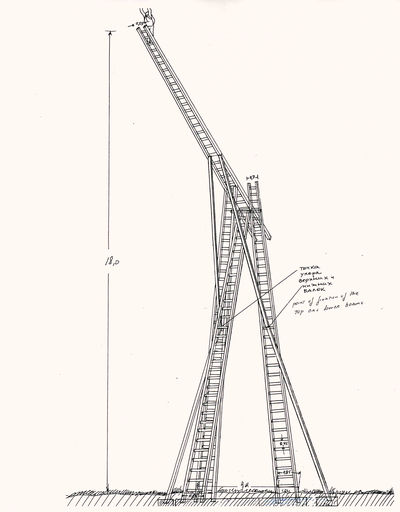- This topic has 23 replies, 21 voices, and was last updated 7 years ago by maccruiskeen.
-
could you float a drone/person up to space
-
seosamh77Free MemberPosted 7 years ago
to a point before whatever superlight super strong balloon burst, then turn on some engines on and fly the rest of the way? say to the space station, could ye just batter up of your own volition?
seosamh77Free MemberPosted 7 years agoand what’s to stop ye matching the earths rotation and just parachuting doon? 😆
andytherocketeerFull MemberPosted 7 years agoyup, it’s called a “rockoon”
(or a “ballocket” if you’re The Register)
leffeboyFull MemberPosted 7 years agoOr just have a geosynchronous cable going into space and runan elevator up it
https://www.extremetech.com/extreme/176625-60000-miles-up-geostationary-space-elevator-could-be-built-by-2035-says-new-studyImagination is awesome
molgripsFree MemberPosted 7 years agoYou could float something up really high yes. But you’d need a huge balloon.
Not to space though. For something to rise up, it has to be less dense than the surrounding area. So as the air gets less and less dense, that gets harder and harder. The balloon would have to expant so hugely that it’s probably beyond current materials. But yes you could get up to a certain height.
Probably quite difficult to manage though. You’d be better off flying up to a great height then turning on the liquid oxygen.
seosamh77Free MemberPosted 7 years agobikebouy – Member
Can you add humans to it ? Please ? I could nominate a few..kinda waiting on this guy doing it.
How much energy would it have taken him to get to the space station?
edit: quite alot i’d imagine, considering the speed he flys back to earth at and the extra weight you’d need with oxygen and engines.
ShredFree MemberPosted 7 years agoYes, but then you are not moving very fast at all, so getting into orbit is a problem. From what I remember, a large part of the rocket fuel is used to get going fast enough to achieve orbit.
maccruiskeenFull MemberPosted 7 years agoAs a low tech solution Ila Kabakov suggests balancing ladders on top of ladders – not to get to the space station but in order to get to meet an angel. The higher you get the wobblier the ladders get and the more likely your encounter with angels becomes
CountZeroFull MemberPosted 7 years agoA space elevator was proposed by Arthur C Clarke in his 1979 book The Fountains Of Paradise, with a tower 22,300 miles long built on what is approximately Sri Lanka.
https://en.m.wikipedia.org/wiki/The_Fountains_of_Paradise
The materials would need to be extraordinarily strong, something like what Larry Niven described as Sinclair Monofilament, but was also described by John Brunner, and by William Gibson, a filament made from continuous bonded molecules:
https://en.m.wikipedia.org/wiki/Monomolecular_wirecloudnineFree MemberPosted 7 years agoJust need a bigger version of this..
[video]http://www.youtube.com/watch?v=1mdKlPvpzDc[/video]
stueyFree MemberPosted 7 years agoTo get out of space station maybe – with smaller rocket( ie not with props or buoyancy)
To get away from earth /out of orbit – “escape velocity is the speed at which the sum of an object’s kinetic energy and its gravitational potential energy is equal to zero.” – about 11km/s
kayak23Full MemberPosted 7 years agoStars are quite pointy so a balloon wouldn’t really be advisable in the outer space.
GreybeardFree MemberPosted 7 years agoA balloon isn’t going to get far enough to offset the complications of launching a rocket from it. Balloon altitude record is about 22km, space station is at 400km. Gravity at 22km is still over 99% of what it is at sea level so escape velocity won’t be significantly lower.
miketuallyFree MemberPosted 7 years agoBalloon altitude record is about 22km
Didn’t Baumgartner* break that, at 40km?
You’d need a lot of helium to lift the rocket, etc. and that’s very expensive. You’d also need an even larger balloon than Baumgartner, which was already the largest ever made.
Probably easier to make a huge rocket.
*and the Google guy that nobody remembers
RockhopperFree MemberPosted 7 years agoOne of the issues with balloons is that as you get higher the pressure outside the balloon drops so the balloon expands and will eventually pop.
njee20Free MemberPosted 7 years agoAlan Eustace beat Baumgartner’s records, just without the Red Bull publicity machine in 2014, he jumped from 41.425km, so point still stands.
IHNFull MemberPosted 7 years agoStars are quite pointy so a balloon wouldn’t really be advisable in the outer space.
😀
flyingmonkeycorpsFull MemberPosted 7 years agoFriend of mine works at a school and floated a bear into the stratosphere (topped out at around 27km I think). It was live broadcasting pictures by Raspberry Pi.
GrahamSFull MemberPosted 7 years agoAnd from that height you can see the earth is definitely flat, not round.
bailsFull MemberPosted 7 years agoThis XKCD What IF kind of addresses it:
https://what-if.xkcd.com/58/The reason it’s hard to get to orbit isn’t that space is high up.
It’s hard to get to orbit because you have to go so fast.
…
getting to space is easy. The problem is staying there.
…
This leads us to the central problem of getting into orbit: Reaching orbital speed takes much more fuel than reaching orbital height. Getting a ship up to 8 km/s takes a lot of booster rockets.
…
The ISS moves so quickly that if you fired a rifle bullet from one end of a football field,[7] the International Space Station could cross the length of the field before the bullet traveled 10 yards.deadkennyFree MemberPosted 7 years ago^^ what that says. Height is easy but you’ll only stay as high as the atmosphere limits by use of a balloon until the balloon bursts, then just plummet straight back down again. Orbit requires a lot more velocity.
Think of orbit as going as fast as possible forwards so that you miss the ground 😀
I.e. you’re being pull towards the ground by gravity but by moving forwards fast enough and given the curvature of the planet, you stay an equal distance from the ground. You’re still falling though (hence the feeling of weightlessness).
The other option is the tether out to a geostationary distance (much much much higher than the ISS orbits). The rotation of the tether due to earth’s rotation by the time you get to the geostationary point will be the speed required for orbit. Could then cut the tether loose. Though have to get the thing out there in the first place though.
Virgin Galactic “space” flights are basically just a straight up and down again. They will not be orbital flights as that’s immensely more difficult, dangerous and expensive. They’ll go out to the edge of the atmosphere and a parabola flight so you get weightless feel also. It’s not a cheap way to get people into space though.
Other thing is once in orbit, because you are travelling so fast it then becomes very dangerous to get back because the only generally viable way of slowing down is to use the resistance of the atmosphere.
maccruiskeenFull MemberPosted 7 years agoA space elevator was proposed by Arthur C Clarke in his 1979 book The Fountains Of Paradise, with a tower 22,300 miles long
I’ve mentioned on here before that a security guard at a place I used to work would set himself problems to solve at the beginning of a lonely nightshift then spend the night trying to figure them out.
One night as I was leaving he told me he was going to solve the problem of affordable commercial space flight by designing a tower tall enough to make it cheap and easy to launch rockets into orbit from the top.
Over night he worked out how tall the tower would need to be to make an appreciable differene, how wide it would need to be at the base and how deep the foundation would need to be.
Then he worked out how many continuous lorry loads of concrete would need to be poured in its construction.
Then he worked out what that would all cost
Then he worked out how many space flights you’d need to launch from it before the savings in launch costs offset the build cost of the tower.
A 8.30 the next morning he told me “Its probably not worth it”
The topic ‘could you float a drone/person up to space’ is closed to new replies.




